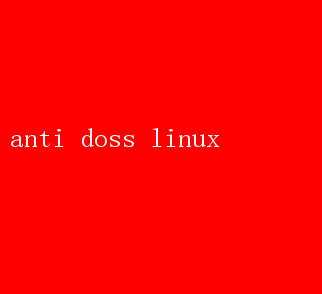
Anti-DDoS Strategies for Linux: Fortifying Your System Against Distributed Denial of Service Attacks
In the ever-evolving landscape of cybersecurity, Distributed Denial ofService (DDoS) attacks pose a significant threat to organizations worldwide. These attacks leverage multiple compromised systems to flood a target with traffic, aiming to overwhelm its resources and render it inaccessible. Linux, being a robust and versatile operating system widely used in servers and networking devices, is not immune to such threats. However, with meticulous planning and implementation of anti-DDoS strategies, you can significantly mitigate the risk and ensure the continued availability of your Linux-based systems.
Understanding DDoS Attacks
Before diving into anti-DDoS measures for Linux, its crucial to understand the basics of DDoS attacks. DDoS attacks can be categorized into several types based on the method used to generate traffic:
1.Volumetric Attacks: These are the most common and involve flooding the target with a massive amount of traffic, usually UDP or ICMP packets, to exhaust bandwidth.
2.Protocol Attacks: These attacks exploit weaknesses in network protocols, such as SYN floods in TCP/IP, to consume server resources.
3.Application-Layer Attacks: These are more sophisticated and target specific vulnerabilities in web applications or services, such as HTTP floods or slow POST attacks.
Each type of DDoS attack requires a tailored response, making a multi-layered defense strategy essential.
Basic Preparedness: Hardening Your Linux System
The first line of defense against DDoS attacks is to harden your Linux system. This involves:
- Updating and Patching: Regularly update your operating system, kernel, and all installed software to protect against known vulnerabilities.
- Using Strong Passwords and Authentication: Implement strong password policies and consider multi-factor authentication for critical services.
- Minimizing Services: Disable unnecessary services and ports to reduce the attack surface. Use firewalls to restrict incoming and outgoing traffic to only what is necessary.
- Secure Configurations: Ensure that all configurations follow best practices, such as disabling root login via SSH and using key-based authentication instead.
Leveraging Firewalls and Intrusion Prevention Systems(IPS)
Firewalls and IPS are critic
